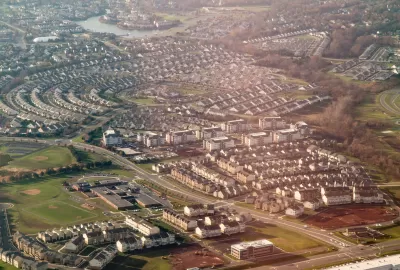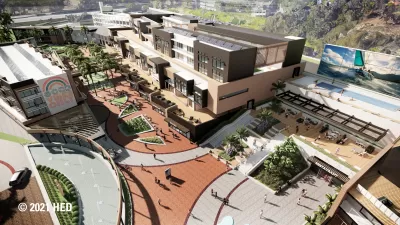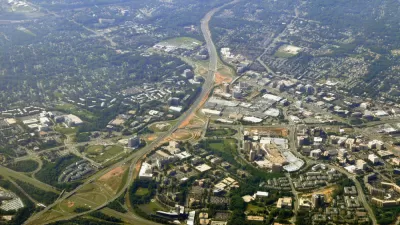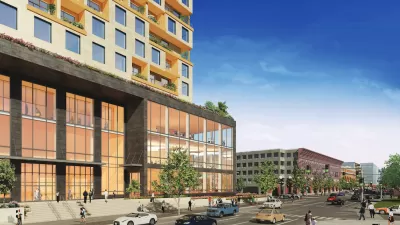How to equip suburban sprawl for a different future.

In an opinion piece in Greater Greater Washington, Aditya Inamdar writes, “We can’t change the original design of suburban neighborhoods, but we can retrofit suburbs to better serve the people who live and work in them.”
For Inamdar, redeveloping office parks and shopping centers to serve new, more efficient uses calls for two key aspects: private development and public policy.
In situations where private redevelopment is simple and profitable, Inamdar writes, “the role of public agencies is more regulatory,” to “ensure that the proposals align with the jurisdiction’s goals, approved plans, policies, and standards.” Public agencies can support the success of retrofitting projects by aligning on clear goals, streamlining permitting and approval processes where possible, and keeping the community involved throughout the process.
In other cases, public agencies may take the lead on a project. “This is typically the case with older suburban activity centers or commercial corridors with fragmented ownership, where it’s simply too complicated for a private developer to make a move.” When agencies want to target an area for redevelopment, they can encourage developers to become partners by backing up their plan with investment in infrastructure that will support the project, actively recruiting developers, and engaging in substantial community outreach work to “understand community needs and preferences before plans go to planning commissions and city/county councils for adoption.”
Inamdar sees the retrofitting of suburban shopping centers, malls, and office parks in the Washington, D.C. region as “an opportunity to create desirable places out of underutilized properties, undeveloped pieces of land, parking lots, and aging commercial strips” and “bring the benefits of urban spaces out to suburbia.”
FULL STORY: Two ways to give our sprawling suburbs a glow up

Planetizen Federal Action Tracker
A weekly monitor of how Trump’s orders and actions are impacting planners and planning in America.

Congressman Proposes Bill to Rename DC Metro “Trump Train”
The Make Autorail Great Again Act would withhold federal funding to the system until the Washington Metropolitan Area Transit Authority (WMATA), rebrands as the Washington Metropolitan Authority for Greater Access (WMAGA).

The Simple Legislative Tool Transforming Vacant Downtowns
In California, Michigan and Georgia, an easy win is bringing dollars — and delight — back to city centers.

The States Losing Rural Delivery Rooms at an Alarming Pace
In some states, as few as 9% of rural hospitals still deliver babies. As a result, rising pre-term births, no adequate pre-term care and harrowing close calls are a growing reality.

The Small South Asian Republic Going all in on EVs
Thanks to one simple policy change less than five years ago, 65% of new cars in this Himalayan country are now electric.

DC Backpedals on Bike Lane Protection, Swaps Barriers for Paint
Citing aesthetic concerns, the city is removing the concrete barriers and flexposts that once separated Arizona Avenue cyclists from motor vehicles.
Urban Design for Planners 1: Software Tools
This six-course series explores essential urban design concepts using open source software and equips planners with the tools they need to participate fully in the urban design process.
Planning for Universal Design
Learn the tools for implementing Universal Design in planning regulations.
Smith Gee Studio
City of Charlotte
City of Camden Redevelopment Agency
City of Astoria
Transportation Research & Education Center (TREC) at Portland State University
US High Speed Rail Association
City of Camden Redevelopment Agency
Municipality of Princeton (NJ)





























